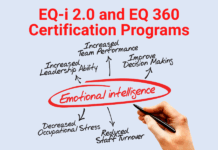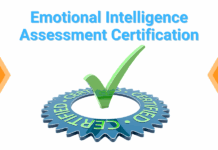
[The following is the full raw transcript of a LEADx Podcast interview, which has been lightly edited for clarity.]
Kevin Kruse: What if you could be as creative as all those Silicon Valley innovators? Today I talk to a Stanford professor who teaches an innovation system to Silicon Valley executives. She shares the career advice she gives her students, which is probably the best I've ever heard from one of our guests. We talk about the innovation cycle, her four step system that you can use to unleash your creativity. And she shares a challenge of the day, which is to just go out into the world and to observe. Notice what things can be better, what things are broken, and it aligns with her very first step, which is to engage with the world and envision.
Today's quote of the day is, “Life is what happens to you while you're busy making other plans.” I think for so many people I know, John Lennon, he's the one who said that original statement, could say life I was what happens to you when you're surfing on Facebook or cleaning up the house or all these other little things we do to procrastinate.
But let's get to the program. For 18 years, our guest has taught the best and brightest at Google, Intel, Adobe, Apple and other Silicon Valley companies how to unleash their creative entrepreneurial spirit. She has a PhD in neuroscience and is a Stanford professor. Her new book is “Creativity Rules: Get Ideas Out of Your Head and Into the World.” Our guest is Dr. Tina Seelig. Tina, welcome to the show.
Dr. Tina Seelig: It's my pleasure. Thank you so much.
Kruse: Now Seelig I have sort of a ritual for this show. All the guests get the same first question, which is because I believe failures are almost always stepping stones we don't know where they lead at the time of course, you know I'm wondering if you'll tell us a story about of your best failures and what you learned from it.
Seelig: I love that you're starting right there. I am a huge fan of failure and I get to practice it every day. In fact, I have my students write failure resumes.
Kruse: Oh wow.
Seelig: Yeah, I am a huge believer that failure is data and that every day we're doing all these experiments in our life and if you don't mine the data from the disappointments as well as the successes you're really missing a huge opportunity. So I keep my own failure resume. Sometimes it's not written down but I definitely at the end of every day look back and say “What did I learn?” So, what are my biggest failures?
Often times my failures are those things I haven't done, you know, missed opportunities like not listening to my gut or not paying attention to something or making assumptions that aren't correct. I think of one of my most profound failures is when I started my first company. I had a failure vision and the vision I had was way too small. I basically said “Well, I want to demonstrate that I can build this company and sell it in two years.” So you can imagine when I got to the end of two years in my mind, well, I had accomplished what I thought I could and so when an opportunity came around to sell the company, I did so. Now, the potential for the business was enormous as demonstrated by other companies that came in afterwards and basically did incredible things in this market, but I realized at that point that if I had had a bigger vision I would have actually worked through the problems that were in front of me as opposed to saying “Okay this is the time to get out.”
Kruse: Yeah, well you're actually making me feel a little bit better to know that I'm in good company because I also consider some of biggest failures sort of having my goals set too small. Similarly when I was in my 20s, one of my early companies I set a goal, hit it, and sold it in five years. Looking back, it's like if I had just held out another five years it would have been you know a multiple higher than it was.
Seelig: Yeah exactly. But you know I look back and say, okay now I get to teach that lesson to my students and it's fascinating to see the different levels of visions people set for themselves. It's an amazing thing for us to question that and to think about what stage we want to play out our life and we have some control over that.
Kruse: Yeah. And in the spirit of the advice you give to students and you know some of your students are just starting their career but I also know you've taught many Silicon Valley leaders, I mean what's a key piece of advice you would give to a young professional who wants to stand out and really you know thrive in her career?
Seelig: Yeah so one of my favorite pieces of advice is that when you get a job, you do not get that job. You're getting the keys to the building and if you just do the job that you've been hired for you've basically let everybody know that that's a job you want to keep, but if you start looking around and seeing all the other opportunities in the organization, that's when you're going to really shine. Most people don't even see that there are white spaces, there are opportunities every single place. If you're the one who can go in and start seeing them and start tackling them, then you start being recognized as a star and incredible doors open up to you.
Kruse: Tina, I'm not just saying this, I've now done about 200 episodes of the LEADx podcast and that might be the single best piece of advice I've heard thus far.
Seelig: Well I've learned it in my own life and I see it with my students and young alumni, is those people who are really paying attention to what's going on. I could give dozens of examples both from my own life, listen I came in to my job at Stanford as a very junior position. I looked at the job and I thought, wow this is kind of an interesting opportunity, entrepreneurship, innovation, leadership. I took the job, it was a super junior position. Why? Because it's like [if you] find a tsunami and stand in front of it. And so, I got in the door and I just kept volunteering for everything. Volunteering, and you know what? I set my sight. At this point I didn't set a low sight for myself, I set a vision of how can I go from being a staff member, actually a really junior staff member, to becoming a professor. And you know what? It took 13 years but I got made a professor five years ago.
Kruse: That is amazing. And you say it as “It took 13 years,” and I'm hearing, “It only took 13 years.”
Seelig: Exactly. I mean, I'm a unicorn. And this is my one piece of advice I think is really important, every single day if you do 1% better than the day before at the end of a year you have, think about the compounding effect, you are dozens of times better than someone who has just stood still. And so just that 1% compounding ends up having an enormous impact.
Kruse: Well I'm going to end up taking that clip because this is almost, it's our unofficial motto on the LEADx show. I always talk about just get 1% better every single day.
Seelig: Oh great!
Kruse: Yeah, this is great. Not even planned, not even planned. And not to, I mean I guess just to underscore the point one more time I'm going to get the details wrong but I think I read, I think it was Sheryl Sandberg who said in one of her early job, I'm not sure which company, and she went to a mentor to say, “Ah the role isn't so great.” And he said, “Listen. If you're offered a seat on a rocket ship, don't ask which seat.” Don't care what seat it is, that's not the point. So I really like this idea.
Seelig: I think you're absolutely right. Absolutely. I mean find a really exciting place with really interesting people right? Surround yourself with people who are smarter than you are, and more knowledgeable and just be a sponge sucking it in. And one of the things that I find is that students often when they're getting ready to go out and start their career, they're so worried about their first job. It doesn't matter, right? It doesn't matter where you start. You can start anywhere because there are opportunities everywhere.
Kruse: Yeah that's right. That's absolutely right. So your new book, Tina, it's Creativity Rules: Get Ideas Out of Your Head and Into the World. So tell us like what's the big idea of the book.
Seelig: Yes. So I wrote this book to solve a really big problem. I found that people really don't understand that there is a pathway to go from the seed to an idea through implementation. We look at it as this magical process and we look at people who have been successful and it's a mystery. And so I spent a long time really evaluating and talking to lots of innovators, lots of entrepreneurs, and also looking at the things I teach in my courses on innovation and entrepreneurship. I realized that there was a process that people go through and it's a combination of attitudes and actions that take you from imagination to creativity to innovation to entrepreneurship. Once you master this you can then use this in any setting.
Kruse: And you call this process the ‘invention cycle,’ right?
Seelig: Exactly.
Kruse: What's such a big idea about this to me is how you started. I think for us mere mortals we tend to think about creativity or being innovative as a mysterious trait you're like “Oh Jane is so innovative,” or “Add Bill to the team he's so creative,” and we don't really think about it. I don't think a lot of people think about it as something that we can improve in ourselves or follow this roadmap. I mean you've actually laid it out for us. So walk us through the steps a little bit more.
Seelig: Yeah. I think you're absolutely right. People think of it as a mystery but really just like teaching anything, you know math, sports, music. I mean it doesn't mean that everybody's going to be a prodigy but we can all get better. It's fascinating to me that people think you can't teach this stuff. So the idea is this and I want to point out it's called the invention cycle because the end leads back to the beginning. So let me just paint a picture.
At the imagination stage, you are engaging with the world and envisioning what might be different. Now this is quite different than a lot of people think. Most people think that you envision what you want to do and then you engage in making it happen. But engagement is the first step, you need to engage, get out there. Engagement is the master key that opens us up and if you're really paying attention you can then envision, “Oh wow here's a problem. I might be able to make that better.”
And once you've figured out what problem you want to tackled and envision what might be better, you move to the creativity stage. That requires some motivation and experimentation and even a little bit of motivation leads to then a little experiment. The results there lead to more motivation. So you've got a little feedback loop there between motivation and experimentation. And once you've now got enough data that shows that the problem you're trying to solve is actually a meaningful one and you've got some interesting solutions, you move to the innovation stage.
At the innovation stage this requires focus and reframing. Essentially this means at this point you're making this a priority, you're going to really focus on this problem and now you're going to look at it from some unique new angles. By reframing the problem, you unlock some really interesting solutions. In fact, this is what I spend most of my time teaching is reframing. How do you basically take an old problem or an old challenge and see it in a new light and you have to question the questions you're asking in order to come up with some real innovations.
Once you've come up with those innovations, you move to the entrepreneurship stage. There, you will need grit, essentially persistence and inspiring other people. You need to inspire other people to join your team, to invest in you, to buy your product and this ends up stimulating their imagination and it goes back to the beginning. Once you've stimulated other people's imagination, they then end up getting triggered to have more creativity, more innovation, and more entrepreneurship.
Kruse: Wow that's …
Seelig: I know that was fast. I know it was fast but was that okay?
Kruse: This is great and it's a challenge for all of our guests since the LEADx show is a short format show. I'm like okay you just spent years of your life working on this book, summarize it you know in two minutes. I think that is a great summary and what I really liked about your book also is that at the end of every chapter you offer some projects, like things to actually do so we can apply this and play with it. You know in the spirit of getting better, 1% better every single day I'm always telling our listeners I give them a daily challenge. So what would be a good challenge that we could do, maybe one of these projects from your book or something similar that we could actually tackle in the next day?
Seelig: Sure. I mean I'll give you something easy from the beginning and you're right. The reason I decided to put exercises at the end of each chapter is that you can read it and find it entertaining and interesting, and the examples and stories are provocative and they give you some insights, but unless you do it yourself it doesn't become yours. So one of the simple exercises in the first chapter is to literally sit down somewhere, a café, your own kitchen, walk around a grocery store, whatever it is and just spend an hour, just an hour or a whole hour paying attention and writing down all the things that you see and notice that you never noticed before and all the problems and the opportunities; essentially a bug list. And start getting used to keeping a bug list of the things that are problems because those are always opportunities, right? The bigger the problem the bigger the opportunity.
Kruse: This is great and it's a great reminder for myself because I think that part of why I'm not more creative is that I'm inside my head too often and not present in my environment, not mindful and I'm thinking about my to do list or something else and I'm not aware of what's going on around me and taking all that in. So I think that's a great challenge that I will accept. So LEADx listeners, creativity, innovation clearly it's critical whether you're a solo consultant, a startup entrepreneur or a big company entrepreneur. So I think we've got two choices: we can all apply and get into Stanford and go take Professor Seelig's class or, Tina, we can get your book and get this wisdom. So tell us how can we find out more about you, your work and of course your new book?
Seelig: Oh you're very kind to ask. Well, I have a sort of nice online presence. People can find out some more about me, I've got a website tinaseelig.com. I also have a blog on Medium, which is I think you can find me if you search for Tina Seelig, and you can follow me on Twitter @tseelig. I'd love to hear from people, I always respond to every email I get and always happy to helpful if someone has an issue.
Kruse: That's very generous of you and we'll put all of those links in the show notes and of course your book is available on amazon.com, all great book stores and all of that. Tina thank you so much for coming on to the LEADx show.
Seelig: It's been my pleasure. Thank you so much.
Kruse: Thanks.





